Key Takeaways
1. Creativity is everywhere, waiting to be discovered
"Real creativity doesn't live in specialist museums for dead art. Real creativity is alive, happening everywhere, every day."
Creativity is ubiquitous. It can be found in unexpected places, from everyday problem-solving to innovative business strategies. The key is to develop the ability to recognize and nurture creative thinking in various contexts.
Exercising the creative muscle:
- Observe creativity in daily life
- Discuss and analyze creative solutions
- Challenge conventional thinking
- Practice reinterpreting familiar situations
By actively seeking out and engaging with creativity in our surroundings, we can strengthen our own creative abilities and apply them to various aspects of life and work.
2. Real creativity solves problems by thinking differently
"If you can't stop it, steer it."
Reframe the problem. True creativity often involves approaching challenges from a new perspective, rather than following conventional solutions. This may mean embracing constraints or turning perceived obstacles into opportunities.
Examples of creative problem-solving:
- Turning potholes into art to get them fixed faster
- Using a country's fear of Russia to boost its global standing
- Converting abandoned dogs into rehabilitation tools for prisoners
By shifting our mindset and looking at problems from different angles, we can uncover innovative solutions that may not be apparent at first glance.
3. Effective communication speaks the audience's language
"You talk to your audience in their language, not yours. That's the only route into their minds."
Know your audience. Successful communication requires understanding the perspective, needs, and motivations of your target audience. This involves adapting your message and delivery to resonate with their experiences and values.
Strategies for audience-centric communication:
- Research your audience's background and interests
- Use relatable analogies and examples
- Avoid jargon and insider terminology
- Test your message with representative audience members
By prioritizing the audience's perspective, communicators can create more impactful and persuasive messages that truly connect with their intended recipients.
4. Impact is crucial for successful advertising
"What gets action is what gets attention. What gets attention is what gets seen."
Stand out or be ignored. In a world saturated with information and advertisements, creating impact is essential for capturing audience attention and driving action. This often requires bold, unexpected, or disruptive approaches.
Elements of impactful advertising:
- Visual distinctiveness
- Emotional resonance
- Unexpected or surprising elements
- Clear, memorable messaging
- Relevance to the audience's needs or desires
By prioritizing impact in advertising, marketers can break through the noise and create campaigns that are not only noticed but remembered and acted upon.
5. Data and technology are tools, not solutions
"It's never about technology and data, it's always about people."
Human insight is irreplaceable. While data and technology can provide valuable information and capabilities, they should be viewed as tools to support human creativity and decision-making, not as substitutes for them.
Balancing data and human insight:
- Use data to inform, not dictate, creative decisions
- Combine quantitative and qualitative research
- Recognize the limitations of data and algorithms
- Prioritize human empathy and intuition in understanding audiences
By maintaining a focus on human-centered thinking, marketers and advertisers can leverage data and technology effectively without losing sight of the fundamental human elements that drive successful communication.
6. Fear and discomfort can drive innovation
"Real disruption is uncomfortable."
Embrace discomfort. True innovation often requires stepping outside of comfort zones and challenging established norms. Fear and discomfort can be indicators that you're pushing boundaries and exploring new territory.
Harnessing fear and discomfort:
- Recognize fear as a potential sign of opportunity
- Encourage calculated risk-taking
- Create safe spaces for experimentation and failure
- Reframe challenges as opportunities for growth
By embracing discomfort and using fear as a motivator rather than a deterrent, individuals and organizations can push themselves to discover truly innovative solutions and approaches.
7. Creativity requires questioning assumptions and illusions
"You can't change things without changing them."
Challenge the status quo. Creative thinking often involves identifying and questioning deeply held assumptions and illusions. This process can reveal new possibilities and opportunities for innovation.
Strategies for questioning assumptions:
- Regularly revisit and challenge "common knowledge"
- Seek diverse perspectives and opinions
- Experiment with reversing or altering established processes
- Look for examples that contradict prevailing beliefs
By cultivating a mindset of healthy skepticism and curiosity, individuals can break free from limiting beliefs and uncover creative solutions that others might overlook.
8. Strategy involves sacrifice and focus
"Strategy is sacrifice."
Prioritize ruthlessly. Effective strategy often requires letting go of extraneous elements to focus on what's truly essential. This process of simplification and focus can lead to more powerful and impactful results.
Implementing strategic focus:
- Identify core objectives and priorities
- Eliminate or minimize non-essential elements
- Concentrate resources on key areas of impact
- Continuously reassess and refine strategic choices
By embracing the concept of strategic sacrifice, organizations can create more focused and effective approaches that maximize their impact and resources.
9. Understanding human behavior is key to marketing success
"Without the story it was just a very ordinary stone. With the story, and the armed guard, it became something they had to see when it came to their town."
Tap into human psychology. Successful marketing and advertising often rely on a deep understanding of human behavior, motivations, and decision-making processes. By leveraging these insights, marketers can create more compelling and effective campaigns.
Applying behavioral insights:
- Use storytelling to create emotional connections
- Leverage social proof and authority
- Understand and address cognitive biases
- Create a sense of scarcity or exclusivity when appropriate
By grounding marketing strategies in a nuanced understanding of human behavior, advertisers can create more resonant and persuasive campaigns that drive real results.
10. Creativity in advertising must connect with ordinary people
"We do what we do for the approval of our peers, not for the people on the street."
Stay grounded in reality. Effective advertising requires maintaining a connection with the everyday experiences and perspectives of ordinary people. Losing touch with this reality can lead to ineffective or out-of-touch campaigns.
Strategies for maintaining connection:
- Regularly interact with diverse groups of consumers
- Conduct field research and observe real-world behavior
- Test ideas and concepts with non-industry individuals
- Avoid industry echo chambers and groupthink
By prioritizing a genuine connection with ordinary people, advertisers can create more relatable, impactful, and effective campaigns that resonate with their intended audiences.
Last updated:
FAQ
What's "Creative Blindness (And How To Cure It)" about?
- Exploration of Creativity: The book delves into the concept of "creative blindness," where individuals fail to see creative opportunities around them.
- Real-life Stories: It uses real-life stories to illustrate how creative thinking can solve problems in unexpected ways.
- Corkscrew Thinking: The author introduces the idea of "corkscrew thinking," a method of approaching problems from unconventional angles.
- Practical Advice: It offers practical advice on how to develop and harness creative thinking in everyday life.
Why should I read "Creative Blindness (And How To Cure It)" by Dave Trott?
- Enhance Creativity: The book provides insights into enhancing your creative thinking skills, which are valuable in both personal and professional settings.
- Engaging Stories: It uses engaging and relatable stories to illustrate creative problem-solving, making it an enjoyable read.
- Practical Applications: The advice is practical and applicable to real-world situations, making it useful for anyone looking to improve their creative abilities.
- Unique Perspective: Dave Trott's unique perspective on creativity challenges conventional thinking and encourages readers to think differently.
What are the key takeaways of "Creative Blindness (And How To Cure It)"?
- Creativity is Everywhere: Creativity can be found in everyday situations if you know how to look for it.
- Corkscrew Thinking: Approaching problems from unconventional angles can lead to innovative solutions.
- Practical Creativity: Creativity is not just for artists; it can be applied in business, problem-solving, and daily life.
- Overcoming Creative Blindness: By exercising your creative muscle, you can overcome creative blindness and see opportunities where others see obstacles.
What is "corkscrew thinking" as described in "Creative Blindness (And How To Cure It)"?
- Non-linear Approach: Corkscrew thinking involves approaching problems in a non-linear, unconventional way.
- Problem as Opportunity: It encourages seeing problems as opportunities for creative solutions.
- Historical Examples: The book provides historical examples, such as Bletchley Park and the Sten gun, to illustrate corkscrew thinking.
- Secret Weapon: Described as a secret weapon in creativity, it can give individuals a competitive edge.
How does Dave Trott suggest overcoming creative blindness?
- Spot Creativity: Learn to spot creativity in everyday situations, from work to daily routines.
- Exercise Creativity: Like a muscle, creativity needs to be exercised regularly to grow stronger.
- Discuss and Share: Engage in discussions about creativity to broaden your perspective and influence others.
- Practical Exercises: The book offers practical exercises and examples to help readers develop their creative skills.
What are some real-life examples of creative thinking in "Creative Blindness (And How To Cure It)"?
- Washington Redskins Sting: A sting operation used free game tickets to capture fugitives, demonstrating creative problem-solving.
- Friendship Benches in Zimbabwe: Grandmothers were trained to provide therapy, turning a lack of psychiatrists into an opportunity.
- Vulcan, West Virginia Bridge: A creative letter to the Russian embassy led to funding for a much-needed bridge.
- Girl Scout Cookie Sales: A Girl Scout sold cookies outside a marijuana dispensary, capitalizing on the munchies effect.
What is the significance of "The Ploughman’s Lunch" story in the book?
- Invented Tradition: The Ploughman’s Lunch was a marketing invention, not a historical tradition.
- Repackaging History: It shows how history can be repackaged to create a compelling narrative.
- Marketing Lesson: Demonstrates the power of storytelling in marketing to create perceived value.
- Cultural Impact: The story became part of national memory, illustrating the impact of creative marketing.
How does "Creative Blindness (And How To Cure It)" address the role of fear in creativity?
- Fear as a Tool: The book suggests that fear can be a valuable tool for entrepreneurs and creative thinkers.
- Steve Jobs Example: Steve Jobs used fear of competition to drive innovation, leading to the creation of the iPhone.
- Evolutionary Advantage: Fear is presented as an evolutionary advantage that keeps species, and businesses, alert and competitive.
- Embrace Fear: Encourages readers to embrace fear as a motivator for creative solutions.
What are some of the best quotes from "Creative Blindness (And How To Cure It)" and what do they mean?
- "Creativity is your legal unfair advantage." This quote emphasizes that creativity can give you a competitive edge in a fair and legal way.
- "The difficulty lies not so much in developing new ideas, as in escaping from the old ones." It highlights the challenge of breaking free from conventional thinking to embrace new ideas.
- "Strategy is sacrifice." This quote underscores the importance of focusing on what truly matters and letting go of the rest to achieve strategic goals.
- "Simple is harder than complicated." It suggests that achieving simplicity requires more effort and creativity than complexity.
How does Dave Trott illustrate the concept of "creative impact" in the book?
- Barney the Parrot: A parrot's foul language brought attention to a wildlife sanctuary, illustrating how being different can create impact.
- Show Don’t Tell: The book emphasizes the power of demonstration over claims, using historical advertising examples.
- Unfriendly Fire: A story about the Austrian army highlights how overthinking and fear can lead to self-defeat, stressing the importance of clear communication.
- Advertising Lessons: The book provides lessons on how impactful advertising can change behavior and perception.
What is the role of "practical creativity" in "Creative Blindness (And How To Cure It)"?
- Triage Thinking: Focus on where your efforts will make the most difference, akin to medical triage.
- Pareto Principle: Apply the 80/20 rule to focus on the most impactful areas of your work or business.
- Problem Solving: View problems as opportunities for creative solutions, as demonstrated by various real-life examples.
- Simplification: Emphasizes the power of simplification in achieving creative breakthroughs.
How does "Creative Blindness (And How To Cure It)" address the concept of "creative surprises"?
- Unexpected Outcomes: The book discusses how unexpected outcomes can lead to creative breakthroughs.
- Backfire Effect: Illustrates how perceived threats can drive demand, as seen in the gun industry under Obama.
- Boys with Toys: A story about a Russian submarine highlights the importance of understanding different perspectives.
- Hold On a Minute: Myer's creative approach to hold music turned a negative experience into a positive one, showing how small changes can have a big impact.
Review Summary
Creative Blindness (And How To Cure It) is highly praised for its collection of short, inspirational stories showcasing creative problem-solving. Readers appreciate the book's engaging writing style, practical insights, and diverse examples from various fields. Many find it thought-provoking and applicable beyond advertising and marketing. The book is commended for its ability to spark creativity and encourage thinking outside the box. While some critics note repetition of anecdotes, most reviewers consider it an enjoyable and valuable read for anyone interested in developing creative thinking skills.
Similar Books
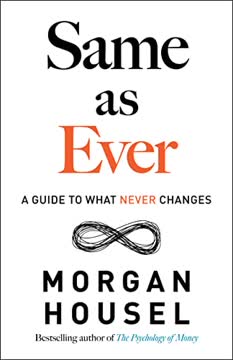
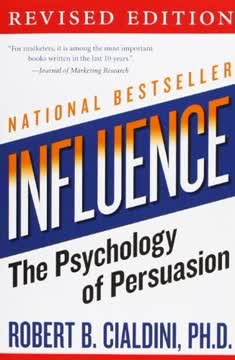
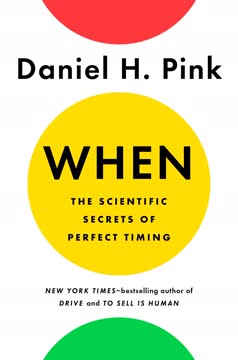
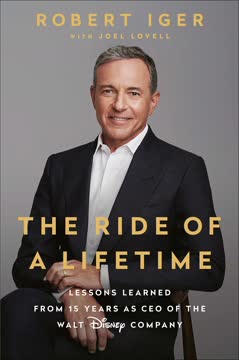



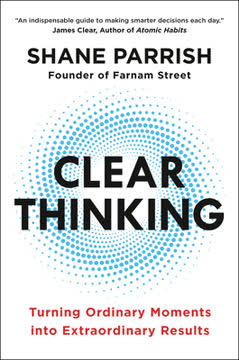

Download PDF
Download EPUB
.epub digital book format is ideal for reading ebooks on phones, tablets, and e-readers.






